#ToyotaMotorCorp
Toyota Wants More Dudes Buying the RAV4, Along With Everyone Else
The RAV4 has quickly become Toyota’s most important vehicle. While the Corolla still trumps it in overall global volume, the small crossover has made a ridiculous amount of headway over the past decade. Prior to the recession, domestic sales of the RAV4 just barely surpassed 70,000 units per year. Then, after the introduction of the model’s third generation in 2006, volume suddenly doubled — progressing to 2017’s all-time high of 407,594 deliveries.
Still, Toyota thinks it can further broaden the model’s appeal. It wants to see more men behind the wheel of the redesigned 2019 model that debuted at the New York International Auto Show last week. The recipe involves a more butch design, added power, an upgraded all-wheel drive system, and new trim levels giving a nod to sporting aspirations. Meanwhile, an updated interior provides more space for manspreading and big rubbery knobs some gentleman find totally irresistible.
2019 Toyota RAV4: From Cute Ute to This
While the fourth generation of Toyota’s RAV4 contained a touch of menace, the model has always been an easygoing compact utility vehicle. When it hit North America in 1995, it didn’t have a lot of competition. General Motors’ collaboration with Suzuki resulted in a bevy of micro SUVs that weren’t spacious or comfortable enough to compete with Toyota’s compact crossover. Likewise, a lot of consumers found it made more sense to purchase something that was more capable on pavement than off-road, and the Corolla-based ute definitely fit the bill.
Two decades later and the RAV4 now has more than its fair share of competition, yet remains totally relevant. In fact, it spent most of 2017 beating the snot out of the Honda CR-V and Nissan Rogue to retake its place as America’s best-selling small SUV — a miraculous feat considering the current generation has been around since 2012.
While Toyota could probably keep selling them unchanged at ludicrously high volumes for another two years, the time has come for a redesign. The automaker absolutely has to hit a home run; the RAV4 is Camry levels of important at this point. It may not have the sedan’s history, but it has the numbers — and with the crossover craze stronger than ever, it absolutely has to be a unmitigated success.
The Toyota 86 Will Never Be Turbocharged, so Shut Up About It
Tetsuya Tada, chief engineer for the Toyota 86 and upcoming Supra, has finally stamped out the possibility of a from-the-factory turbocharged version of the Toyobaru coupe. That’s right, enthusiasts, the Toyota 86 and Subaru BRZ are incapable of being turbocharged.
According to Tada, installing a turbo on the model’s 2.0-liter Boxer engines would require an entirely new platform. That’s odd, considering every reputable aftermarket company offers a turbo kit for it. Equally strange is the automaker’s total unwillingness to seriously entertain the idea of a turbocharged Toyobaru, even though it knew the public was clamoring for one.
“When we launched 86, I got literally millions of questions from around the world of ‘when would you be launching the turbo version?'” Tada said. “I believe that often times I answered that there won’t be a turbo version, and there were some articles in the media that Mr. Tada doesn’t like a turbo.”
New Toyota Auris Previews Next-generation Corolla IM Hatchback for North America
The Toyota Corolla iM is a bit of a paradox. The bodywork suggests it could be a fun-loving hot hatch, but the illusion dissipates the second you climb into the driver’s seat. The engine seems sick, unfit for the task it has been given, and the ergonomics leave something to be desired. While it’s not really much worse than the Corolla sedan, and it is a serviceable daily commuter for those wanting something affordably efficient, it doesn’t seem up to par with Toyota’s usual fare.
With Scion dead and buried in North America and the Corolla sedan outselling the iM ten-to-one, we’ve wondered if Toyota would even bother keeping the hatchback around. But it looks like it will. The automaker previewed the new Auris hatchback — a European model nearly identical to the Toyota (formerly Scion) iM — in Geneva this week, offering strong hints that it will make its way westward.
Uber Technologies Is Getting Awfully Chummy With Toyota
Uber CEO Dara Khosrowshahi says he expects the company to have its own autonomous cars within a year but, since the company doesn’t build cars, it needs to partner with one that does. Until now, the company has been in bed with Volvo Cars, previously stating its intention to purchase 24,000 self-driving XC90 SUVs from the brand between 2019 to 2021.
However, the relationship between the two firms isn’t exclusive or binding. That means Uber can still play the field, and may have already found a friend with benefits in Japan.
On Thursday, Khosrowshahi posted a photo on Twitter of himself laughing with Toyota Motor Corp. President Akio Toyoda and Executive VP Shigeki Tomoyama at the automaker’s headquarters. “Having fun with Akio-San and Tomoyama-San @ToyotaMotorCorp HQ,” he wrote. “Great discussions about growing our #autonomous partnership and lessons 4 me in building a great culture. And yep, those are Ichiro [Suzuki’s] bats.”
It seems Toyota could be the side piece Uber is looking for.
Toyota Recalling Late-model Prius and Specific Lexus SUVs
Toyota announced a recall of roughly 49,000 vehicles in the United States on Wednesday. Affected models include the 2016 Toyota Prius, the 2016 Lexus RX, and the 2015-2016 Lexus NX crossover. The safety issue involves the airbag systems that could fail due to an electrical problem.
Unlike the scary Takata recalls, the biggest danger here is the non-deployment of the front or side-curtain inflators. Toyota claims an open circuit could develop within the system’s sensor. If this were to occur, the airbag warning light should illuminate to indicate a failure.
Toyota Losing Sanity Over the Automotive Industry's Uncertain Future
Toyota Motor Corp. is shuffling its management team because it’s worried about the automotive industry’s uncertain future. The changes, announced this week in Tokyo, take effect at the start of the new year. Toyota wants to diversify its corporate leadership in order to handle the changing shape of car building and the growing role of “mobility.”
However, an argument can be made that the company might be browning its pants prematurely. While the current nature of the automotive industry appears to be evolving into something else, it won’t happen overnight. Still, company president Akio Toyoda talks of the shifting winds as if someone has placed a gun to his head.
“Over the next 100 years, there is no guarantee that automobile manufacturers will continue to play leading roles in mobility,” Toyoda explained. “A crucial battle has begun — not one about winning or losing, but one about surviving or dying.”
Toyota Sticks With Hydrogen for 'Fine-Comfort Ride' Concept Vehicle
Still glued to hydrogen as the fuel of the future, Toyota will unveil a new fuel cell concept at the Tokyo Motor Show that could be summarized as a mobile lounge. Existing somewhere between a crossover and minivan, the “Fine Comfort-Ride” concept vehicle underscores a more roomy and relaxing automotive future.
At 190 inches long and 77 inches wide, it isn’t a petite transport. However, that mass translates into a spacious cabin — with ample room for six — affixed with all the luxuries you’d want to see in the car of tomorrow. It has lavish swivel chairs, mood lighting, connectivity for each passenger, and windows that double as infotainment screens.
Unfortunately, it has the face of Droopy Dog. This may be the first time an automaker has molded a vehicle’s bodywork into jowls.
Toyota Debuts Concept-i Series of Electric 'Mobility Solutions'
While we enjoy a concept car that isn’t set so far into the hypothetical future that it’s almost impossible to imagine the world in which it could exist, it’s also fun to see less-than-realistic designs emerge in a vehicle that is pure science fiction. Pursuing the latter mindset, Toyota has decided to expand upon the original Concept-i car with an entire series of “mobility vehicles” — each intended to help deliver a tomorrow where you are no longer required to walk.
Now part of a full lineup of experimental vehicles, Toyota views the Concept i-Ride and Concept i-Walk as supplementary modes of transportation for last January’s original four-seat concept. That vehicle debuted as more of a robotic friend than an traditional automobile. Toyota even went so far as to propose an artificial intelligence system that allowed the i-car to build a relationship with the driver that “feels meaningful and human.”
For 2018, Lexus IS and RC Model Naming Scheme Is All Kinds of Warped
First things first: Lexus is hardly the only automaker deserving of blame for unintelligibly altering model nomenclature. Moreover, Lexus continues to offer some models for which the badge makes sense. A Lexus LX570, for example, is an LX with a 5.7-liter V8. The Lexus IS350 we tested earlier this month utilizes a 3.5-liter V6.
How sensible. How obvious. How traditional.
But for 2018, the Lexus IS and its RC stablemate will muddy the displacement waters that were already complicated in 2017 by a detuned 3.5-liter V6 that wore IS300 and RC300 badging. In 2018, while the mid-range car continues to make its power from a 260-horsepower 3.5-liter V6 (not the upgraded 311-horsepower 3.5-liter V6 of the IS350 and RC350), the 2.0-liter turbocharged mill that was previously under the hood of the IS200t and RC200t is now the engine under the hood of the rear-wheel-drive IS300 and RC300.
Confused? Yeah, we are, too. Let’s try that again.
Toyota Expects Lexus LS Sedan Sales to Take Off Again, but Not Nearly to Historic Levels
Timing is tough.
Toyota’s Lexus luxury marque launched the fourth-generation Lexus LS for the 2007 model year, just prior to an economic collapse that was followed up by an anti-car/pro-SUV shift. Lexus, which averaged more than 25,000 annual U.S. sales of its LS flagship sedan during its third generation and then topped 35,000 sales in 2007, suddenly found itself struggling to top the 10K marker.
As the fourth-gen LS’s tenure came to an end, Lexus watched as demand for the LS quickly collapsed. From fewer than 11,000 sales in 2013 and fewer than 9,000 in 2014 to barely more than 7,000 in 2015 and only 5,514 in 2016, the once hugely successful Lexus LS — a former leader of America’s large luxury sedan class and the car that was responsible for the genesis of Lexus — became an afterthought.
The fifth-generation Lexus LS is set to go on sale this winter, and Lexus expects to see a huge increase in demand for the new car in 2018. Lexus does not, however, expect the LS to generate anything like the kind of interest the big sedan did prior to the proverbial global financial crisis.
2017 Lexus ES300h Review - Driving It Like I Stole It, Once
This is not a proper review, not the kind of tome presented to TTAC’s audience after a major vehicle spends a full week with one of the site’s editors. I didn’t drive the 2017 Lexus ES300h across multiple states. I didn’t resolve to land on as many beaches as possible on EV power. I didn’t get a proper chance to take pictures. I hardly drove the Lexus ES300h at all.
Ah, but the one journey undertaken by the midsize luxury hybrid and your humble TTAC Prince Edward Island bureau chief was quite a journey indeed.
What happens when the least sporting Lexus car is suddenly tasked with arriving at a destination on the other side of the Island in order to be removed from Island duty? What happens when you rush a car that was never intended to be one of Lexus’ rushable cars?
Decidedly un-hybrid-like mileage, for one thing.
If Current Trends Hold, the Toyota Prius Will Not Be America's Best-selling Hybrid in 2018
If current marketplace trends hold, the Toyota Prius will not be America’s best-selling hybrid by next year.
The steep rate of decline experienced by the Prius in 2017 is no surprise. For one thing, it’s a continuation of the decline we saw earlier in the fourth-gen Prius’ tenure. For another, there are new Prius competitors, such as the Hyundai Ioniq and Toyota’s highly efficient 2018 Camry Hybrid. But the Prius’s rapid slide — sales are down by a third so far this year — is also what Toyota predicted at the turn of the calendar.
Yet even if the rate of Prius decline suddenly and unexpectedly slows, it’s difficult to imagine a scenario in which the Toyota Prius, long the dominant hybrid in America, holds onto its crown as the top seller for long.
The victor in 2018 will, however, almost certainly be a Toyota.
It's About Time - Lexus Will Finally Show A New LS Flagship AT NAIAS In 2017
The current automotive climate is not a favourable one for full-size sedans, luxury or otherwise.
Many automakers have persevered, reinvesting in their flagship sedans despite decreased demand. BMW, for instance, suffered a 29-percent loss in U.S. 7 Series demand over the last decade, yet the company introduced two new generations of 7 Series during that period.
Lexus, however, has allowed the LS to wallow in a pool of its own misery. The car that started it all for Lexus was once a conservative, value priced, marketplace leader in the full-size sector; a car that could beat the overpriced Germans at their own game. Now, the decade-old fourth-generation Lexus LS has all but disappeared from the public consciousness. Sales have fallen 73 percent since 2006.
Toyota has finally determined that it’s time for a new Lexus LS. In fact, it’s been time for a new Lexus LS for quite a while.
Consumer Reports 5 Most Reliable Vehicles For 2016 Are Mostly Niche Models You Won't Buy
Buick grabbed much of the limelight when Consumer Reports released its 2016 reliability survey results yesterday, earning the best-ever brand ranking of any domestic marque. But atop the leaderboard, Lexus and its Toyota parent brand continued the automaker’s reign.
Not surprisingly, three of the five most reliable vehicles in America are therefore Lexus and Toyota products. With the Lexus GS and Toyota 4Runner, the top 10 list is half-filled with Toyota products. Only one vehicle in the top ten is a domestic, the eighth-ranked Chevrolet Cruze.
They may be reliable, but do Americans actually want these vehicles? We took a look at the five least reliable vehicles in America and realized that, yes, in some cases, Americans do want them. In fact, the vehicles on the least reliable list account for 2.7 percent of the U.S. new vehicle market.
When it comes to the five most reliable vehicles in Consumer Reports’ survey, less than 1 percent of the market’s buying habits are represented.



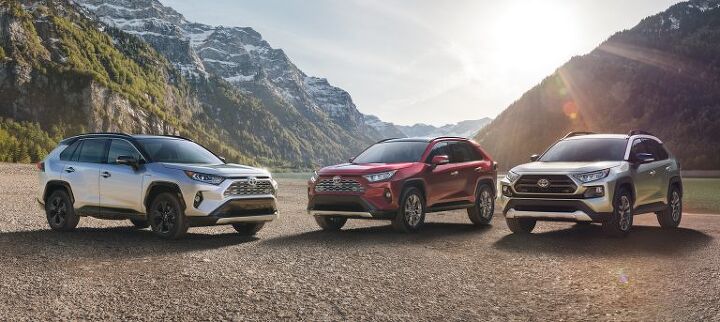


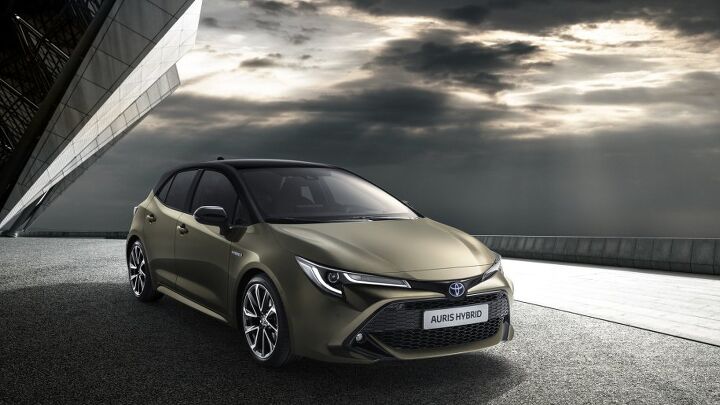



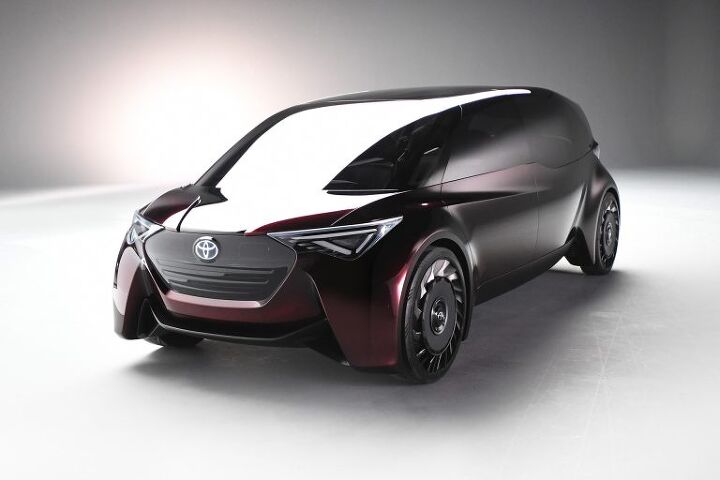

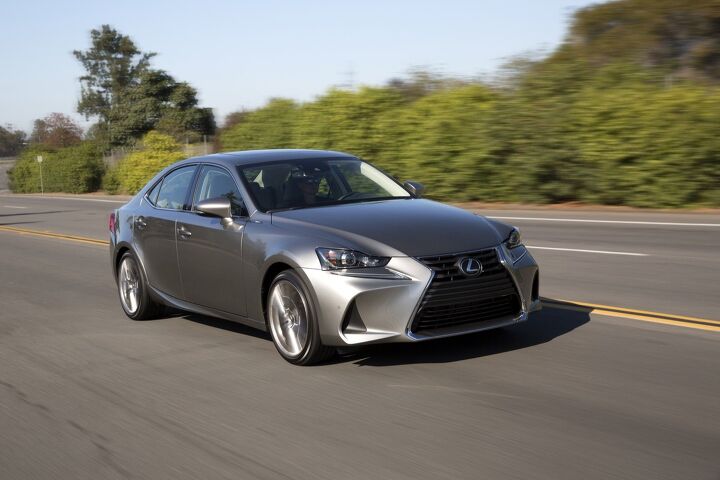

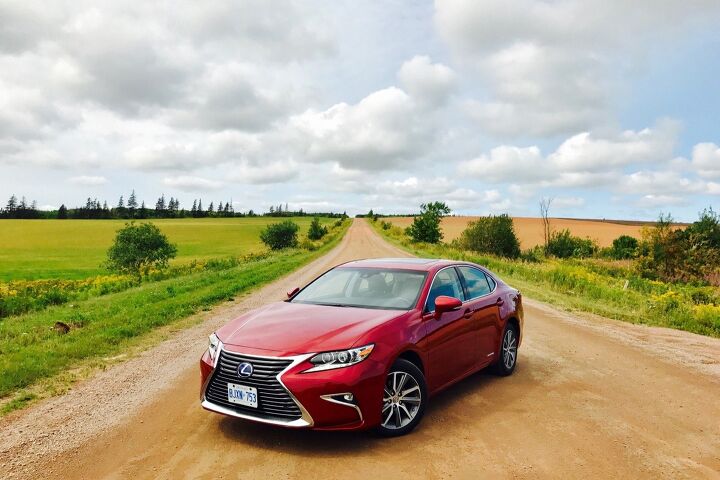














Recent Comments